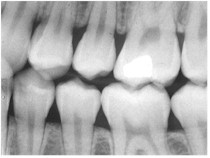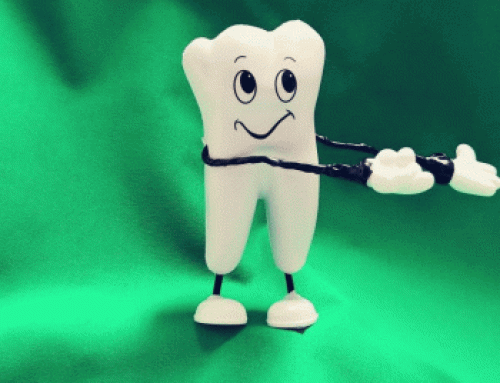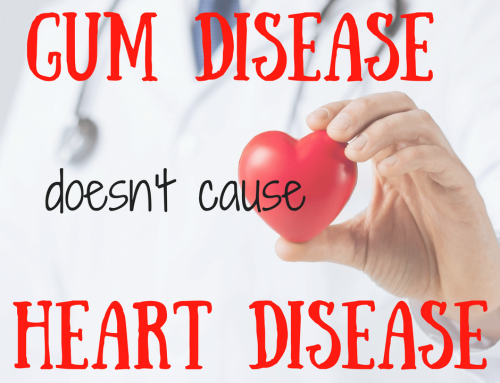A new study attempting to correlate dental x-rays in the past to an uncommon benign brain tumor was published today. And the headlines are scary! A cursory Google search of todays news yields these headlines:
- “Are Dental X-rays Causing Brain Tumors?” (reported by KGO-AM)
- “American Cancer Society study links dental x-rays to tumor” (reported by ABC Action News)
- “Dental x-rays linked to common brain tumor” (reported by Reuters)
- Early Dental X-rays Linked to Brain Tumors” (reported byABC News)
You get the picture. If you read the headlines and listen to the superficial news story you could walk away with the message that “dental x-rays cause cancer” or more likely “dental x-rays = bad” and “avoid dental x-rays.”
I am a dentist. I use digital x-rays to help me diagnose dental problems all day long. I really don’t want to think that all these x-rays I’ve taken over the years are causing horrible things to happen to my patients. I think it’s worth taking a good hard look at how the research was done and what it really says.
- studying “past exposure”: The newly published study deals with past exposure of x-rays. Current standards for film x-rays use much less radiation than past standards. Digital x-rays use much, much less than current film x-rays. So any findings of this research only deals with your exposure in much earlier life. Technology has essentially solved the problem of higher exposure to dental x-rays already.
- using patient’s memories: The new study is a case control study. Case controls are useful, but are one of the weaker forms of medical evidence out there. The study compared two groups. One group was composed of patients who have already been diagnosed with a meningioma and the other group of patients did not have the condition*. The researchers asked the patients in the study to remember how often and what kind of dental x-rays they had in the past. So the data for the study was dependent on what the patients remembered. Can you tell me what kind of x-rays you had in 1995? Can you tell me whether a panoramic x-ray was taken instead of a full mouth set of x-rays? I’m not critical of the study being done nor of the researchers. That is how case control studies are done. I’m much more critical of how the media is portraying this evidence.
- type of tumor: A meningioma is a “benign”/rarely cancerous tumor. It is the most common brain tumor. Meningiomas are tumors that occur in the membranes lining the brain and spinal cord. They can range in severity from occult (the patient didn’t know that they had the tumor) to life threatening. Common complications are seizures, localized neurological problems (muscle spasms) and they can cause increased intracranial pressure. Depending on their location they can “crowd out” vital structures of the head and neck. More severe meningiomas often require surgery, and sometimes radiation therapy. The cause of this type of tumor is not well understood, although there is evidence that genetics plays a part. The current study was done in an effort to understand potential causes. I don’t mean to downplay the seriousness of a meningioma. Since I originally wrote this blog post I have heard from many survivors of meningioma and they assured me that I definitely had downplayed their severity, and for that assumption, I apologize. The most severe type can be debilitating and even life threatening. Luckily, the majority are not this serious. The bottom line…dental x-rays don’t cause cancer, they don’t cause brain tumors and this research doesn’t claim that they do.
- “is linked to”: The media loves to make the connection that “A is linked to B.” It makes great headlines. But it almost never means what the media portrays it to mean. “Is linked to” is not the same as “is caused by.” “Is linked to” or “is correlated with” only means that there is a relationship between the two factors. The new research shows that there is a relationship, but it’s not reasonable to assume that one causes the other, yet. More research will be done that may help us refine our understanding of these relationships, but until then…don’t assume!
So, should you have a talk with your dentist about x-rays? Absolutely! Should you avoid them at all costs? No. Not at all. The amount of radiation used with digital x-rays is so small as to be considered insignificant. The amount of radiation from dental x-rays is surprisingly low relative to some other common exposures…you might be surprised! Treatment or lack of treatment should be based on the amount of risk that the treatment can cause. A frank discussion with your dentist should help you understand that modern dental x-rays, particularly digital x-rays, are a very low risk diagnostic tool that offer great preventive benefit.
Did you find this post helpful? Silly? Scandalous? I’d love to hear about it! You can share any Mead Family Dental post with a “Like” on Facebook, a “+1″ on Google+ or you can even “Tweet” it with Twitter! All you need to do is hover over the heart shaped button next to the title of the post. Or you can leave a comment by clicking on the balloon shaped icon next to the title.
If you’re looking for a dentist in Saginaw, we’re always happy to accept new patients! You can request an appointment online or call the office at (989) 799-9133. And, as always, you can email me at alan@meadfamilydental.com. I always answer my own emails!
* Actually, the group was assumed to not have a meningioma…the researchers took the patient’s self reporting of no meningioma as the same as “no disease.” Since often the condition displays no symptoms, this isn’t a good way to choose a control group.







